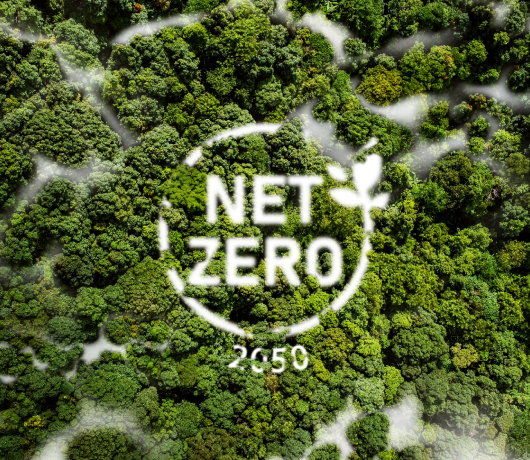
Pathway to Net zero: A vision for 2050
Himadri’s business units remained dedicated to reduce carbon footprint. Himadri is implementing measures to moderate emissions, including investments in energy efficiency, development of low carbon products that meet EU emission intensity standards and a transition of operations toward sustainability.
Himadri’s strategy prioritises energy intensity reduction for Scope 1 and Scope 2 emissions, with the objective of setting a sectorial benchmark. The Company began creating an inventory for Scope 3 activities, identifying and accounting for relevant categories. Himadri is evaluating initiatives to reduce Scope 3 emissions, strengthening its sustainability commitment.
Himadri recognises that climate risk assessment is an evolving science, requiring periodic updates to physical and transition risk assessments. This approach empowers Himadri to align its strategy with the latest projections and build a responsive resilience framework to address climate change impacts. Details of the Company’s mapped risks and opportunities are presented in its inaugural TCFD report.
Achieve, accelerate & Scale


At Himadri, we recognize our responsibility as a specialty chemicals company to minimize environmental impacts. To address this, we have set ambitious targets and implemented robust measures. Key sustainability priorities, identified through our materiality analysis, include mitigating climate change, reducing GHG emissions, managing energy and water resources, promoting product stewardship, advancing waste management, and fostering a circular economy. Our efforts are underpinned by a comprehensive, integrated environmental management system that adheres to legal requirements, internal policies, and standard operating procedures, ensuring we go beyond compliance to improve environmental performance.
Fuel switching from conventional fuels to cleaner, more sustainable alternatives is a cornerstone of Himadri’s strategy to achieve its Net Zero Vision 2050. As part of this transformative journey, our leadership is actively exploring innovative solutions, including the utilization of solar energy in industrial processes and the replacement of fossil fuels with biomass. These forward-looking initiatives reflect our dedication to harnessing sustainable energy sources to drive positive environmental change.
Building on this commitment, waste heat recovery systems have already been successfully implemented and seamlessly integrated into our business operations. These initiatives not only enhance energy efficiency but also highlight our unwavering focus on environmental stewardship. By proactively adopting such measures, Himadri reinforces its role as a leader in sustainable industrial practices and sets the foundation for a greener, more resilient future.
Responsible consumption is a core pillar of Himadri’s strategy to achieve its Net Zero Vision 2050. In line with this commitment, we have launched a pilot project to integrate recycled/ non-virgin materials into our packaging solutions. This innovative initiative aims to reduce our reliance on conventional packaging materials, significantly minimizing our environmental footprint.
To drive this effort, dedicated teams have been empowered to develop eco-friendly and commercially viable alternatives that align with both our sustainability objectives and operational efficiency. By prioritizing sustainable packaging, Himadri reinforces its commitment to environmental stewardship, demonstrating how innovation and responsibility go hand in hand to create a more sustainable future.
Himadri is steadfast in its efforts to scale up the consumption of recycled and upcycled raw materials, reflecting its unwavering commitment to building a sustainable and circular economy. By actively seeking innovative methods to integrate recycled and upcycled inputs into its production processes, Himadri is reducing dependency on virgin materials and minimizing its environmental footprint.
This strategic focus includes collaboration with value chain partners and investments in advanced technologies to enhance the use of reprocessed raw materials without compromising on quality or performance. These efforts not only contribute to resource conservation but also align seamlessly with Himadri’s broader sustainability objectives, including climate action and achieving the Net Zero Vision 2050.
By scaling up the use of recycled and upcycled materials, Himadri continues to lead by example, demonstrating how industries can embrace responsible consumption and production practices to create shared value for the planet and future generations.
Himadri is actively embracing the use of renewable fuels in transportation as a vital step toward reducing carbon emissions and building a sustainable future. By integrating biofuels and other renewable energy sources into our transportation operations, we are significantly minimizing our environmental footprint while enhancing energy efficiency across our logistics network.
This shift to renewable fuels supports Himadri’s broader commitment to climate action and advancing sustainable practices throughout our value chain. By collaborating with logistics partners and investing in innovative fuel solutions, we are fostering cleaner transportation methods that align with our Net Zero Vision 2050.
Through this proactive approach, Himadri reaffirms its dedication to driving environmental stewardship, setting an example for how industries can transition to renewable energy sources and achieve lasting sustainability goals.
Pillars of Vision Net Zero 2050

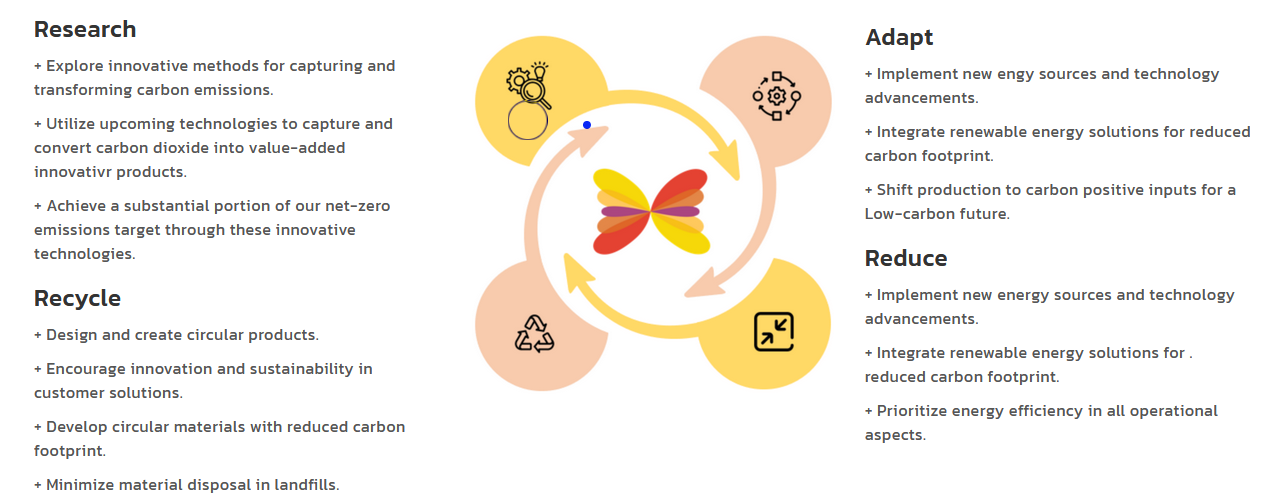
Transforming By-products into Sustainable Solutions


Himadri's commitment to sustainability and environmental responsibility is evident in its strategic approach to managing natural resource depletion. The company's focus on increasing waste material reuse, recovery, and repurposing plays a significant role in minimizing environmental impact while improving operational efficiency. One notable example of this is its work with coal tar derivatives, particularly in the production of Coal Tar Pitch, which is a critical component used in various industries, including aluminium production, graphite electrodes, and as a binder in carbon products.
In Himadri's laboratory operations, the company adopts an innovative recycling and reuse methodology to manage chemical waste. Specifically, solvents like Quinoline and Toluene, which are commonly used for quality testing in the production of Coal Tar Pitch, are recycled and reused multiple times. This not only reduces the consumption of these volatile chemicals but also minimizes the disposal of hazardous waste, aligning with the company's environmental policies and the government’s stringent guidelines on waste management.
Additionally, Himadri's efforts to reduce the consumption of packaging materials in its operations further illustrate the company’s commitment to sustainability. For example, packaging materials are reused for intra-company transportation, which leads to a reduction in packaging waste and lowers the cost associated with purchasing new materials. This initiative also supports the company’s broader environmental goal of reducing waste and lowering its carbon footprint across the supply chain.
The production of coal tar derivatives, particularly Coal Tar Pitch, is a complex process that involves several steps, each of which generates some form of waste or by-product. However, Himadri’s proactive approach to waste management ensures that much of this waste is either repurposed or minimized, which enhances resource efficiency and reduces the environmental impact of production activities.
Energy & GHG Emission

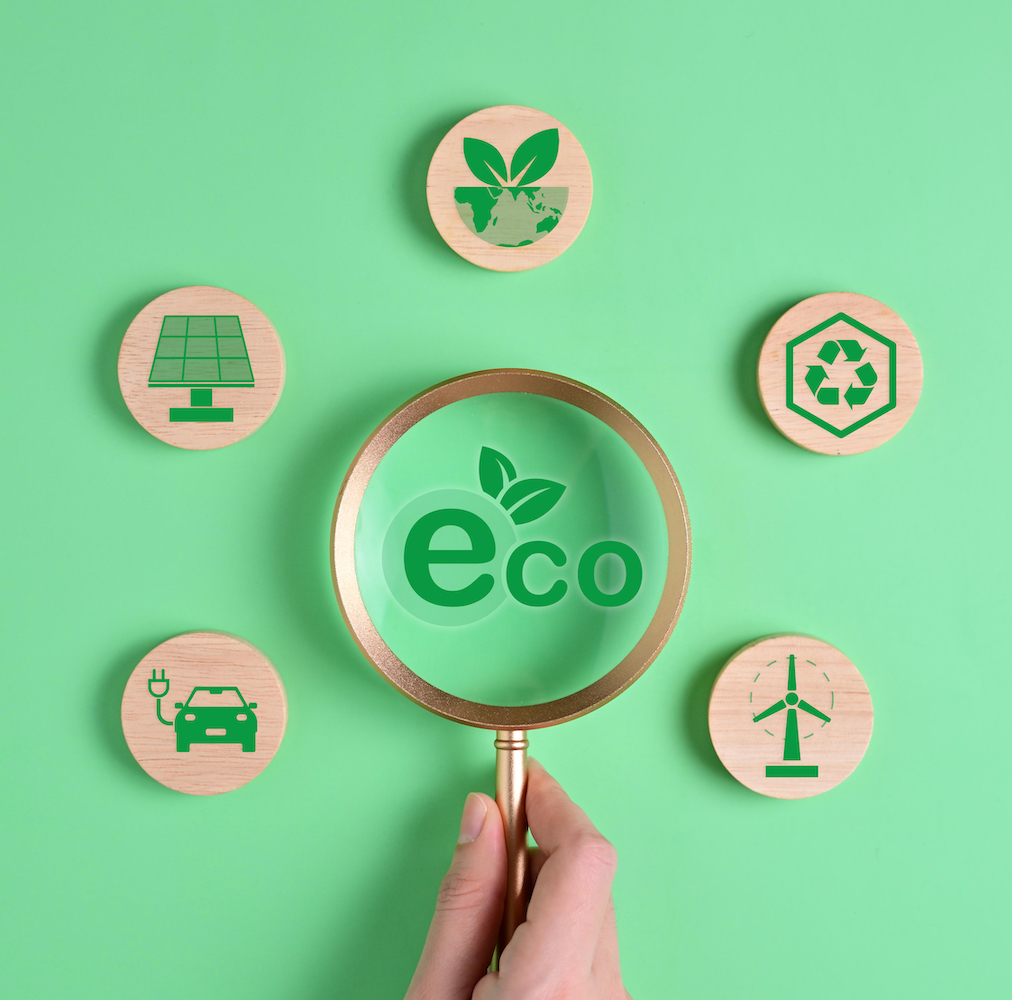
GHG emission reduction being a material topic for Himadri, we have not only started initiatives on reducing Scope 1&2 emissions but also enhance attention on reducing Scope 3. This dedication to sustainability and efficiency not only enhances operational performance but also sets a benchmark for the industry, reinforcing Himadri’s position as a pioneer in sustainable industrial innovation. Our current corporate strategy emphasizes reducing energy intensity for Scope 1 and Scope 2 emissions, with the goal of setting an industry benchmark.
By recognizing the adverse impact of GHG emissions on the global climate, we acknowledge this as a shared risk as well as an opportunity. As a corporate entity, we are fully committed to making a positive contribution in this regard.
Our energy efficiency and GHG emission policy is designed to reduce GHG emission, enhance efficiency in all functional processing and minimize environmental impact.
Energy Efficiency & GHG Emission Management PolicyWater Management

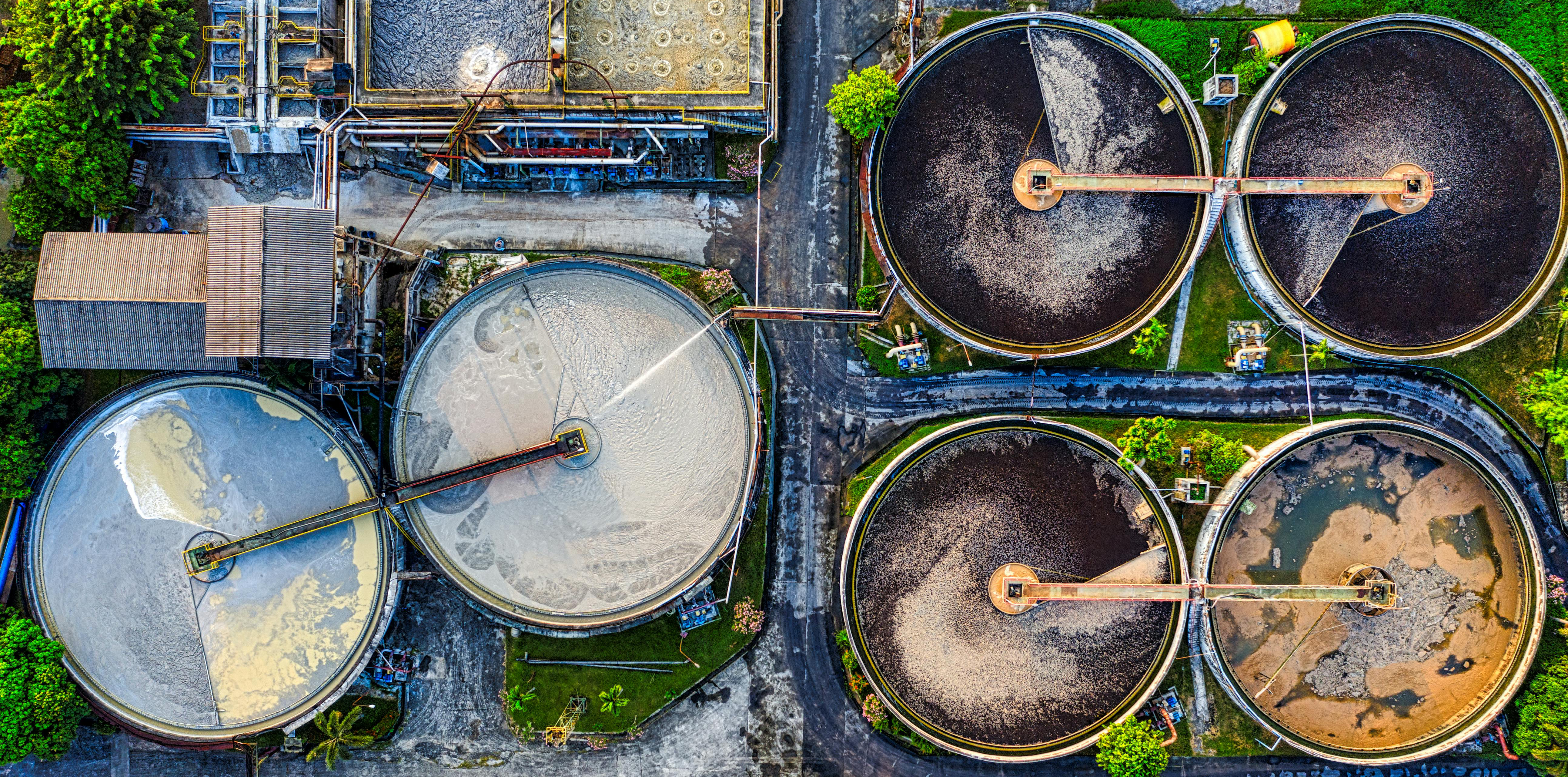
Himadri continues to focus on established water management initiatives, including monitoring water stress levels across relevant sites using various tools. Water management has a direct impact on environmental sustainability and operational efficiency. It ensures responsible use, treatment, and water recycling. Effective water management mitigates risks related to water scarcity and regulatory compliance, strengthening environmental stewardship. Himadri's water management contributes to Mission LiFE and is likely to translate to water positivity. We have adopted Zero Liquid Discharge technology comprising of ETP-WRP system which is the final recovery part of the Effluent Treatment Plant (ETP). This effective recycling of water from wastewater significantly reduces the consumption of groundwater and significantly enhance the ZLD capacity from 430KL to 800KL.
As part of its commitment to sustainability, Himadri continues to enhance its rainwater harvesting capacity, progressively reusing rainwater each year.
Our water efficiency and preservation policy outlines our key objectives related to water management as a mainstream responsibility, our aim to minimize water wastages and our commitment to create a forward pathway by integrating climate change related risks and opportunities concerning water conservation
Water Efficiency & Preservation PolicyResponsible Consumption

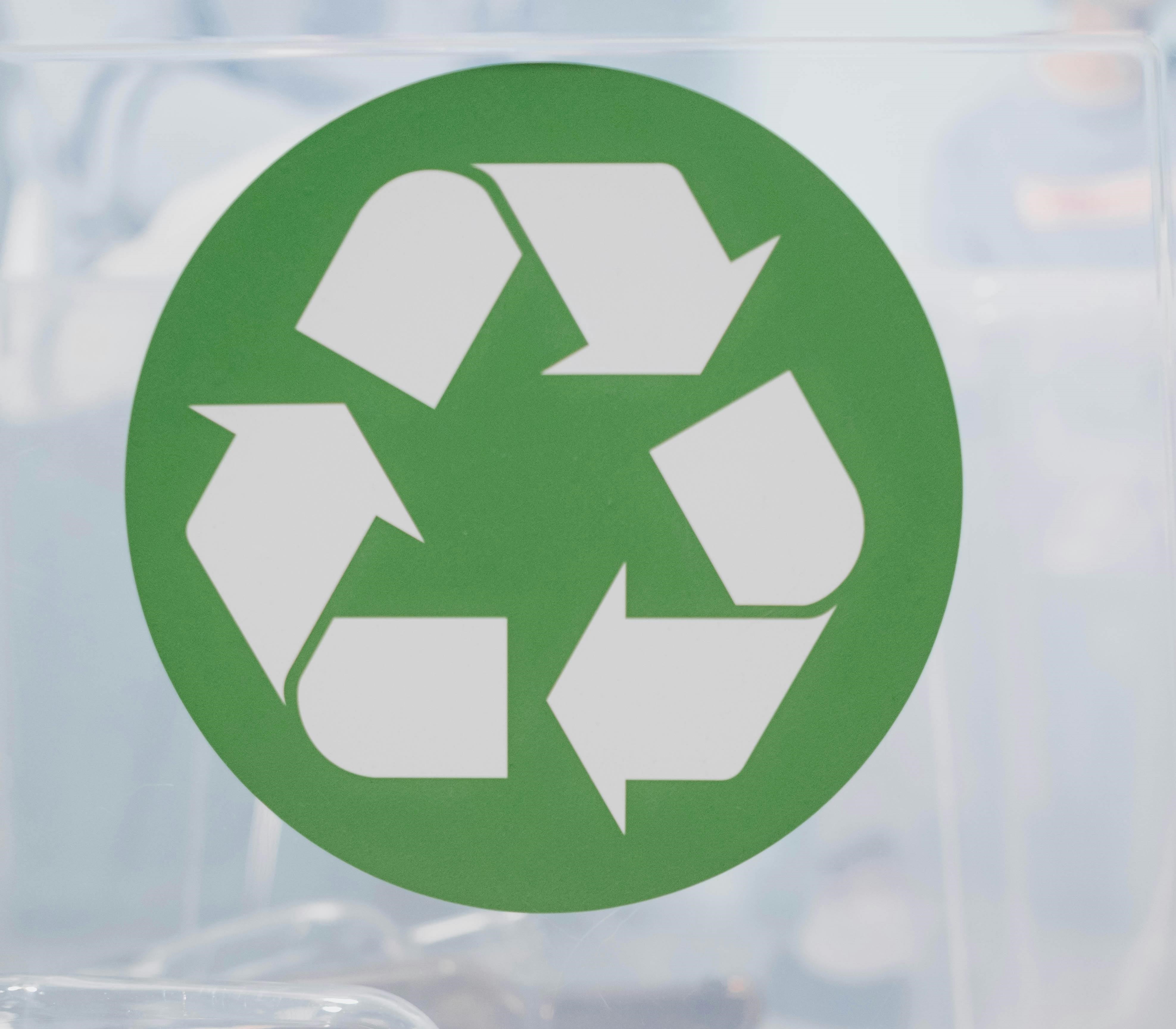
Himadri strives to achieve its ambitious waste management target “zero waste to landfill". We acknowledge the growing importance of reducing plastic consumption and enhancing recycling. In addition to plastics and hazardous waste, Himadri’s waste management initiatives encompass a wide range of Key Performance Indicators. Our efforts to reduce production waste are guided by a principle: avoid waste. Company has improved its waste management practices by focusing on proper segregation, storage and disposal of waste containing Persistent Organic Pollutants. Operational waste generation and management data are reviewed to ensure accurate reporting in accordance with global and national standards.
Our responsible consumption policy explicates commitments to establish effective waste management practices and our strive for increasing proportion of non-virgin material to avoid depletion of natural resources.
Responsible Consumption Policy
Promoting environmental sustainability


Our effective CSR programmes serve as a shining example of our commitment to environmental sustainability. The building of a thriving Green Belt around our factory is part of our progressive strategy, showing a real effort to reduce our environmental footprint. We also promote the planting of trees by participating in initiatives that promote reforestation. With approximately 30,000 tree planting activities, we have not only beautified the landscape but also engaged in significant landscaping efforts across the five neighbouring villages, benefiting over 16,000 villagers.